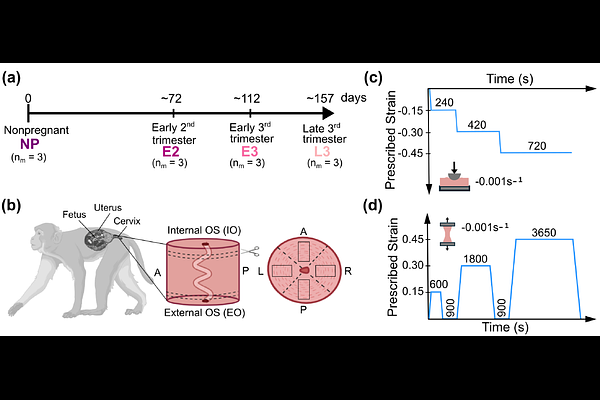An Anisotropic Reactive Viscoelastic Model of the Rhesus Macaque Cervix for Studying Cervical Remodeling

An Anisotropic Reactive Viscoelastic Model of the Rhesus Macaque Cervix for Studying Cervical Remodeling
Cordon, C. A. D.; Fang, S.; Rosado-Mendez, I. M.; Ateshian, G.; Hall, T. J.; Feltovich, H.; Myers, K. M.
AbstractThe uterine cervix is a soft biological tissue with critical biomechanical functions in pregnancy. It is a mechanical barrier that supports the growing fetus. As pregnancy progresses, the cervix becomes more compliant and eventually opens in late pregnancy to facilitate childbirth. This dual function is facilitated by extensive remodeling of the cervical extracellular matrix (ECM), giving rise to its complex time-dependent material properties. Premature cervical remodeling is known to result in preterm birth, defined as birth before 37 weeks of gestation. While previous work has studied cervical remodeling using various biomechanical methods, it remains unclear how the intrinsic or flow-independent viscoelastic behavior of the cervix is influenced by cervical remodeling. In this study, an anisotropic reactive viscoelastic material model was formulated and investigated under tensile deformation to understand material behavior in cervical remodeling. To calibrate the model, experimental force relaxation data was used from uniaxial tension tests on Rhesus macaque cervical specimens from four gestational time points. The results showed that cervical tissue equilibrium and instantaneous stiffness significantly decreased from the non-pregnant to the late pregnancy status. In addition, cervical tissue in the late third trimester relaxed faster to equilibrium than the other gestational groups, particularly at prescribed tensile strains greater than 30%. This fast relaxation to equilibrium helps the cervix dissipate tensile hoop stresses induced by the fetus during labor, preventing its rupture. This work provides insights into time-dependent cervical remodeling features, which are crucial for developing diagnostic methods and treatments for preterm birth.